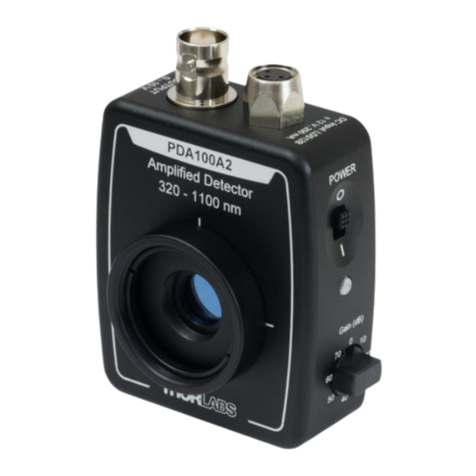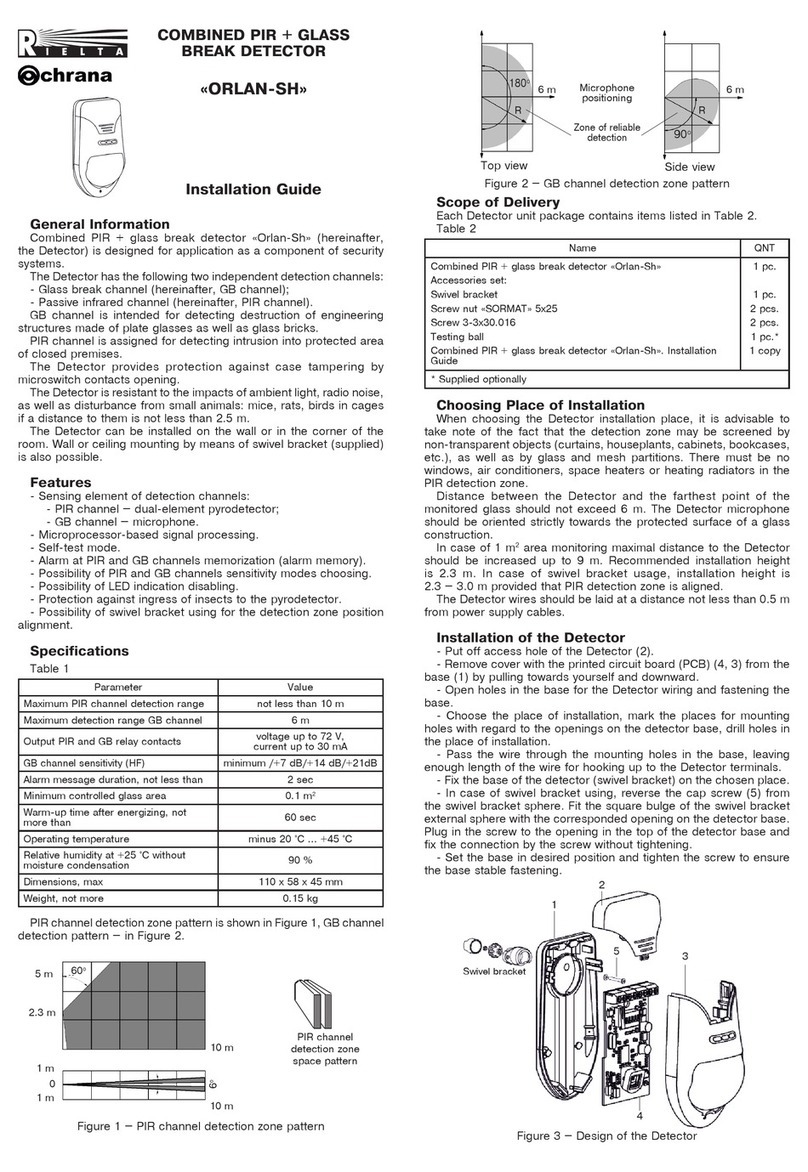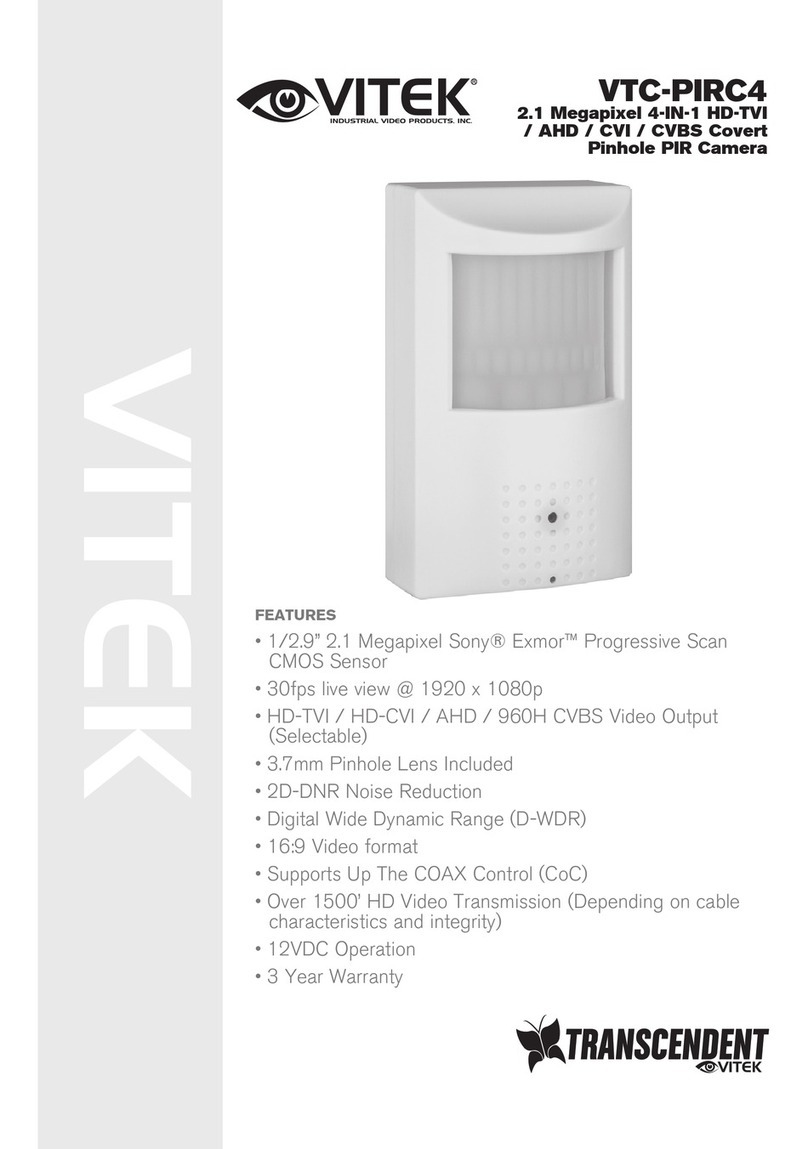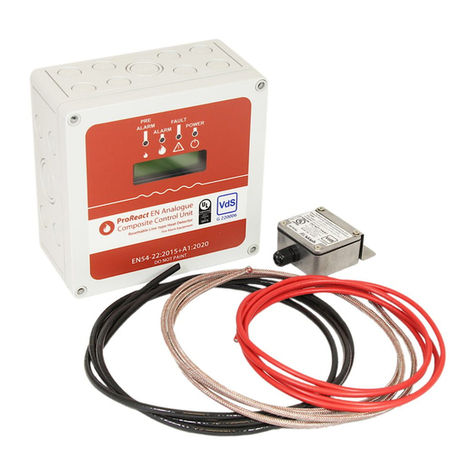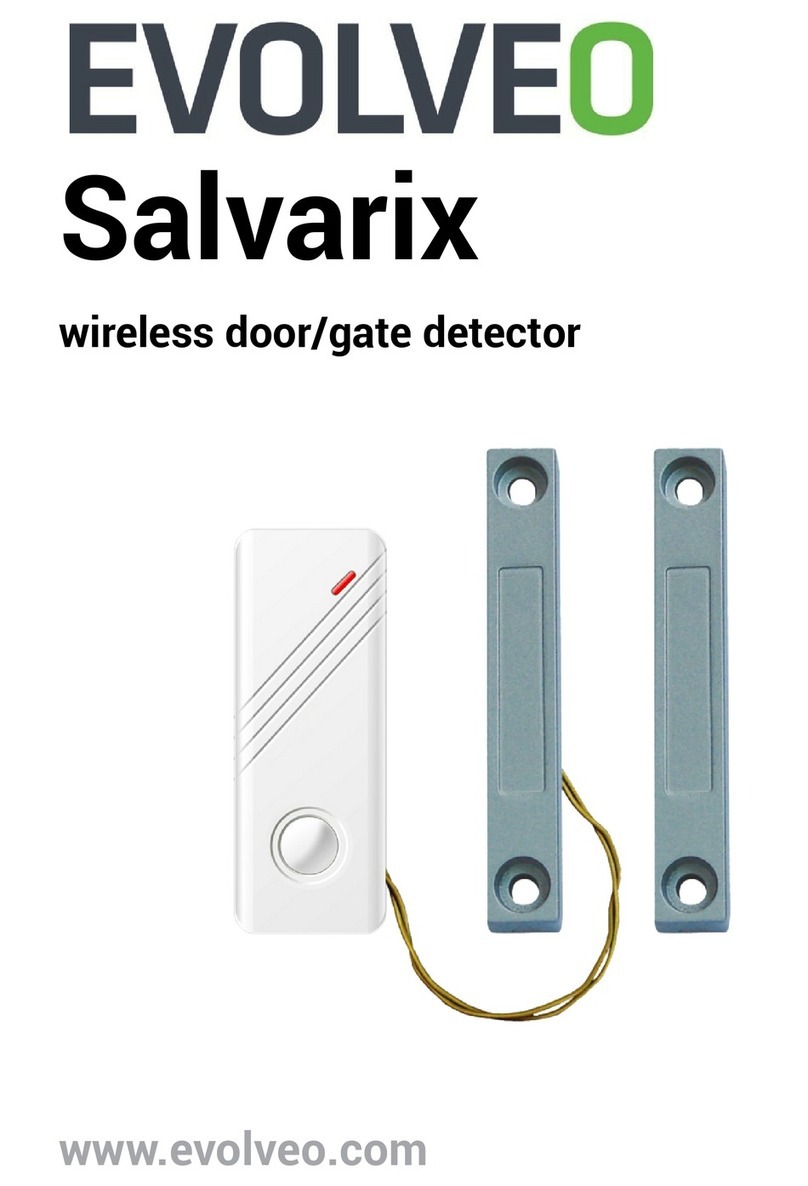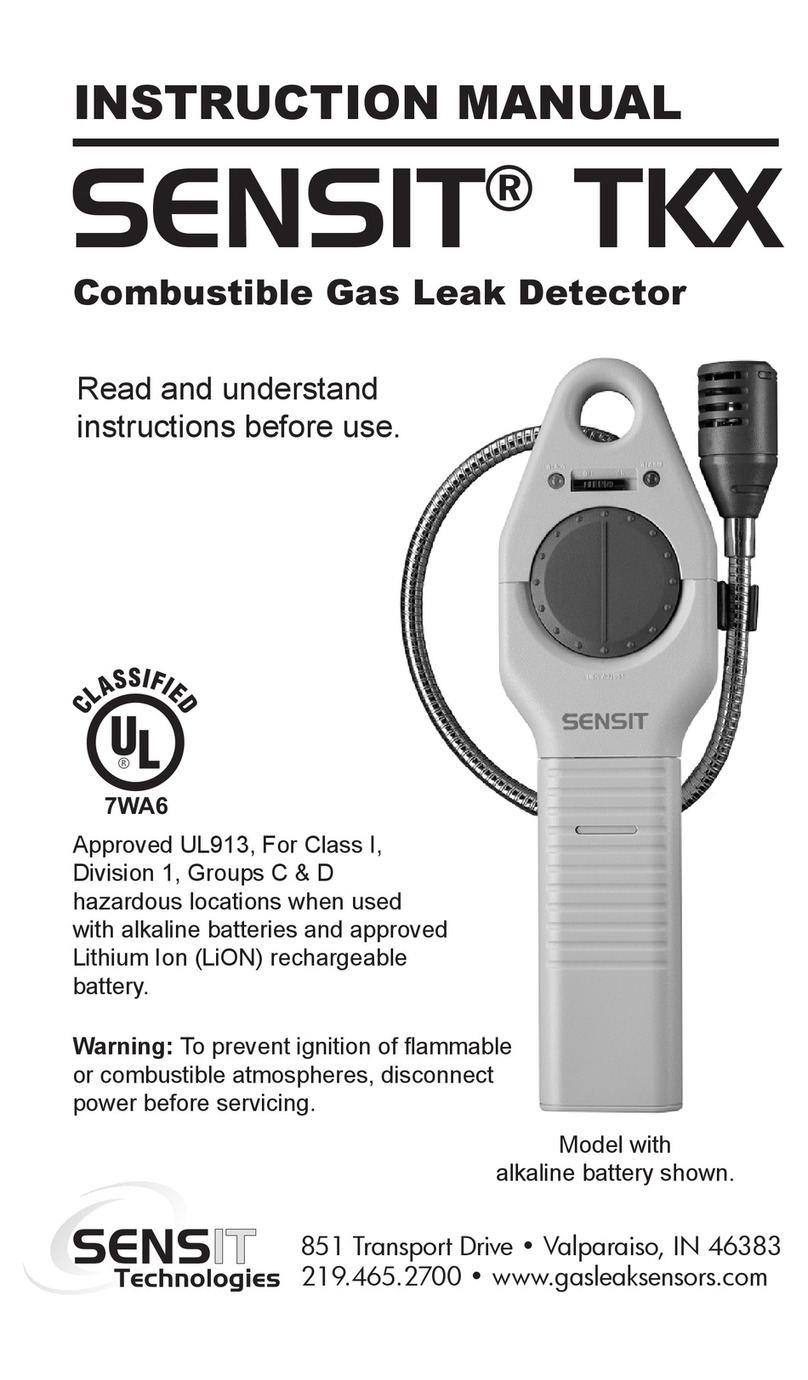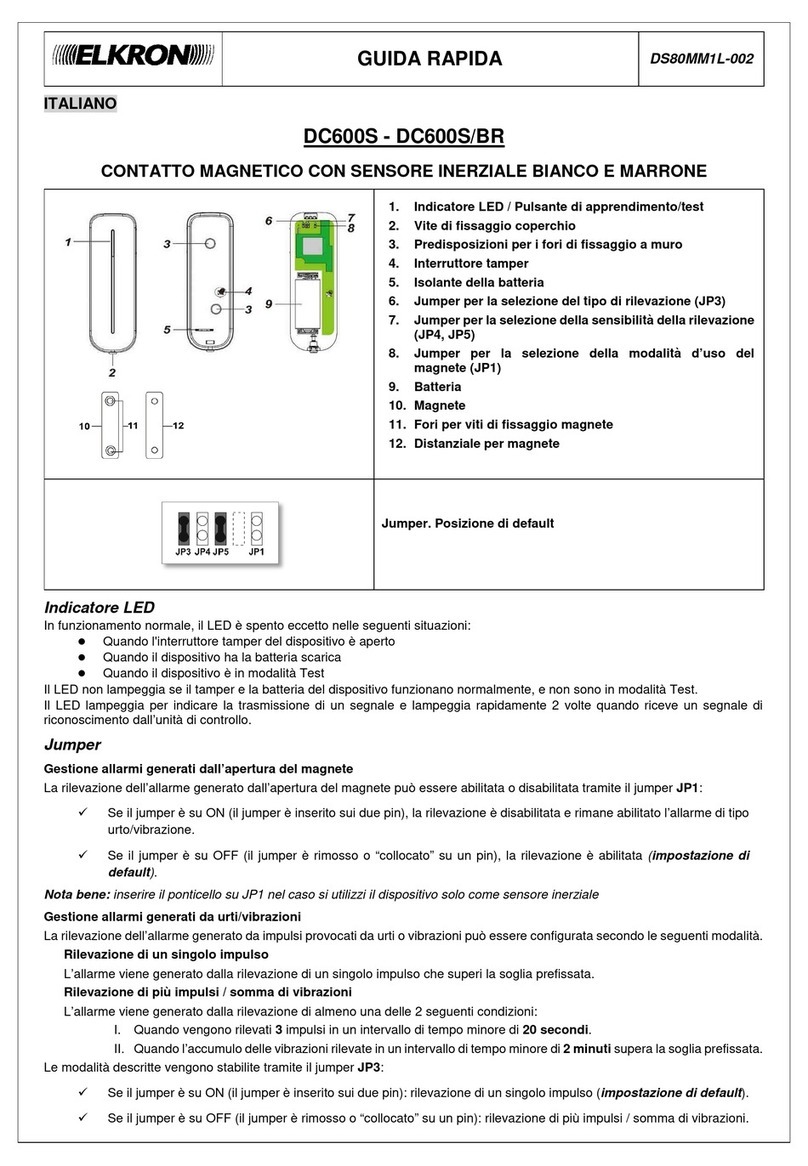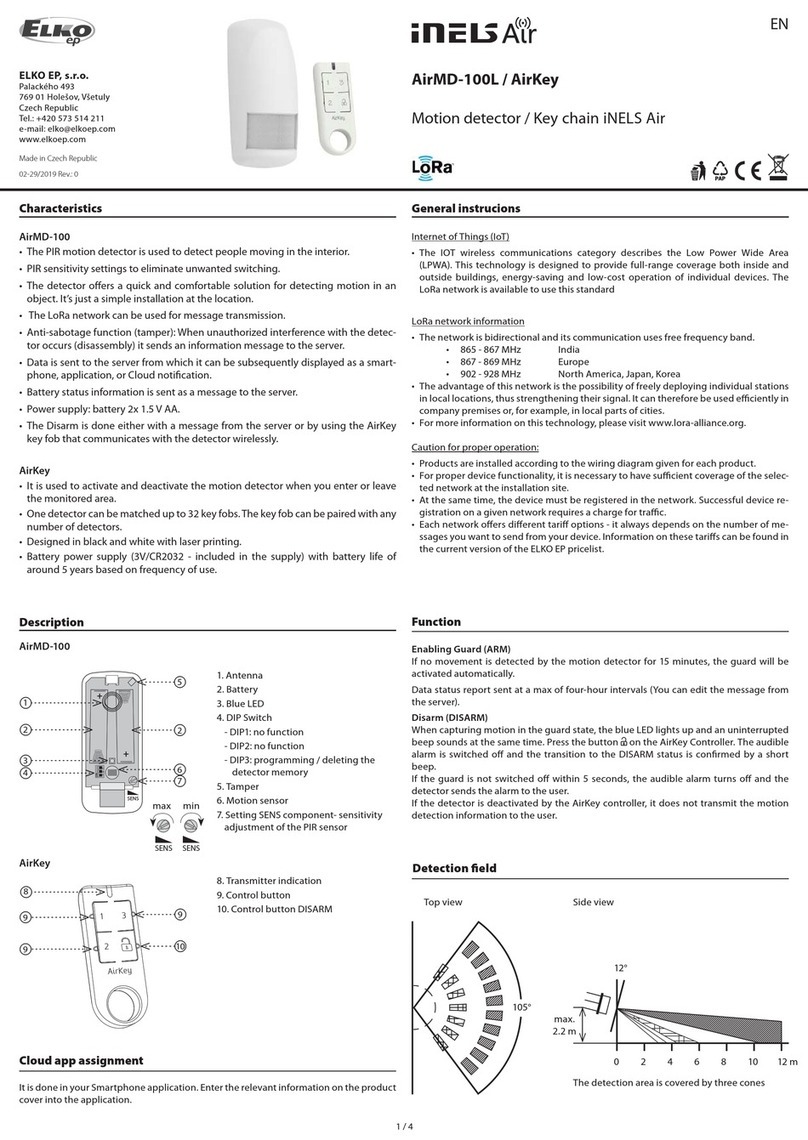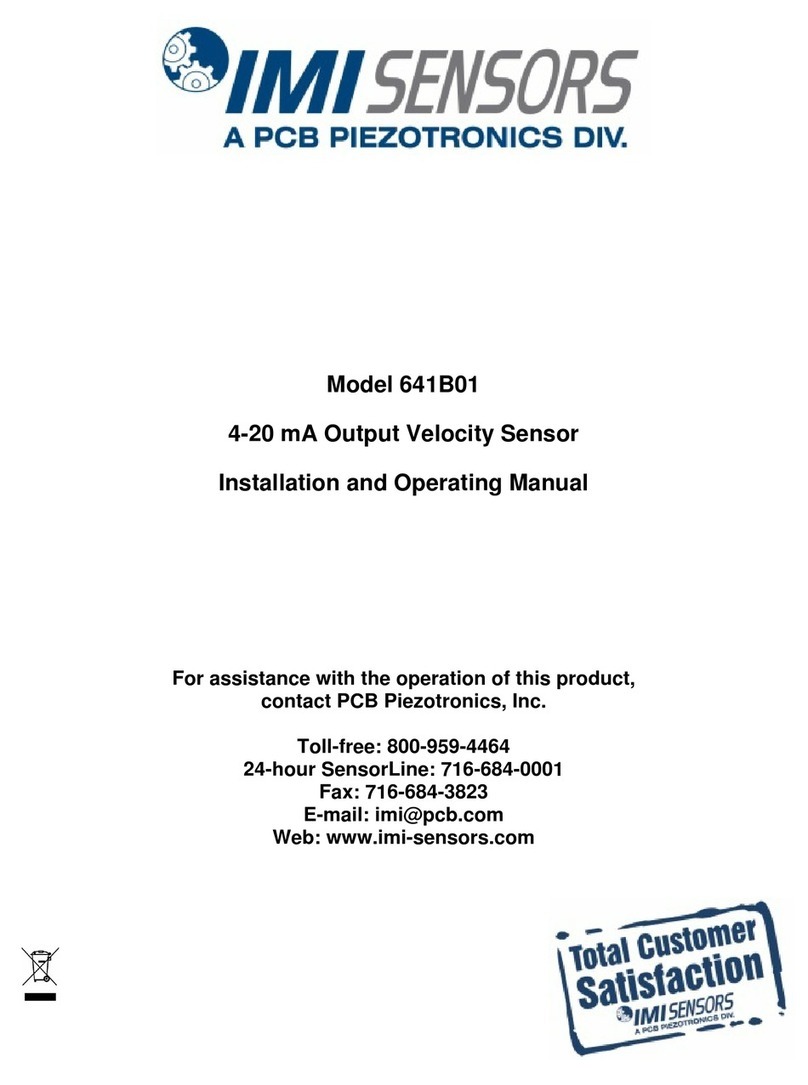Polar Electro Toneohm 550A User manual

Polar Instruments Ltd.
Garenne Park
Rue de la Cache
St. Sampson
Guernsey
Channel Islands
GY2 4AF
England
Fax: 44 (0)1481 52476
MAN 149-9603
TONEOHM 550A
OPERATOR
MANUAL


TONEOHM 550A SHORTS LOCATOR OPERATOR MANUAL
WARRANTY
For a period of one year from its date of purchase new and undamaged from Polar
Instruments Ltd, POLAR INSTRUMENTS LTD or its authorized distributors will,
without charge, repair or replace at its option, this product if found to be defective in
materials or workmanship, and if returned to POLAR INSTRUMENTS LTD or its
authorized distributors transport prepaid. This warranty is expressly conditioned
upon the product having been used only in normal usage and service in accordance
with instructions of POLAR INSTRUMENTS LTD and not having been altered in any
way or subject to misuse, negligence or damage, and not having been repaired or
attempted to be repaired by any other than POLAR INSTRUMENTS LTD or its
authorized distributors. EXCEPT FOR THE FOREGOING EXPRESS WARRANTY
OF REPAIR OR REPLACEMENT POLAR INSTRUMENTS LTD MAKES NO
WARRANTY OF ANY KIND, INCLUDING BUT NOT LIMITED TO, ANY EXPRESS
OR IMPLIED WARRANTY OF MERCHANTABILITY OR FITNESS FOR ANY
PARTICULAR PURPOSE, AND POLAR INSTRUMENTS LTD SHALL NOT BE
LIABLE FOR ANY DAMAGES, WHETHER DIRECT OR NOT OR OTHERWISE,
BEYOND REPAIR OR REPLACING THIS PRODUCT.
Copyright Polar Instruments Ltd. 1995
DECLARATIONS

TONEOHM 550A OPERATOR MANUAL
ii
ELECTROMAGNETIC COMPATIBILITY
European Community Directive Conformance Statement
This product is in conformity with the protection requirements of EC Council Directive
89/336/EEC on the approximation of the laws of the Member States relating to
electromagnetic compatibility.
A declaration of conformity with the requirements of the Directive has been signed by
POLAR INSTRUMENTS (UK) LTD
11 College Place
London Road
Southampton
England
SO1 2FE
This product satisfies EN50081-1:92 and EN 50082-1:92

SAFETY
iii
SAFETY
WARNING
The LIVE and NEUTRAL lines on this unit are BOTH fused.
This unit contains no user-serviceable parts. When the unit is connected to its supply,
the opening of covers or removal of panels is likely to expose dangerous voltages. To
maintain operator safety, do not operate the unit unless the enclosure is complete and
securely assembled.
GROUNDING
This unit must be earthed (grounded); do not operate the instrument with the safety
earth disconnected. Ensure the instrument is connected to an outlet with an effective
protective conductor terminal (earth). Do not negate this protective action by using an
extension cord without a protective conductor.
Note: This instrument is fitted with 3-wire grounding type plug designed to fit only into a
grounding type power outlet. If a special local plug must be fitted to the power cord
ensure this operation is performed by a skilled electronics technician and that the
protective ground connection is maintained. The plug that is cut off from the power cord
must be safely disposed of.
Power cord color codes are as follows:
Europe
brown live
blue neutral
green/yellow earth (ground)
United States
black live
white neutral
green ground

TONEOHM 550A OPERATOR MANUAL
iv
POWER SUPPLY
Check that the indicated line voltage setting corresponds with the local mains power
supply. See the rear panel for line voltage settings.
To change the line voltage settings refer the instrument to a skilled electronics
technician. Instructions for changing the line voltage settings are contained in the
TONEOHM 550A Service Manual published by Polar Instruments.
TONEOHM 550A OPERATION
This manual contains instructions and warnings which must be observed
by the user to ensure safe operation. Operating this instrument in ways
other than detailed in this manual may impair the protection provided by
the instrument and may result in the instrument becoming unsafe. Retain
these instructions for later use.
The TONEOHM 550A is designed for use indoors in an electrical workshop
environment at a stable work station comprising a bench or similar work surface.
Use only the accessories (e.g. test probes and clips) provided by Polar Instruments.
The TONEOHM 550A must be maintained and repaired by a skilled electronics
technician in accordance with the manufacturer’s instructions.
If it is likely that the protection has been impaired the instrument must be made
inoperative, secured against unintended operation and referred to qualified service
personnel. Protection may be impaired if, for example, the instrument:
•Shows signs of physical damage
•Fails to operate normally when the operating instructions are followed
•Has been stored for prolonged periods under unfavourable conditions
•Has been subjected to excessive transport stresses
•Has been exposed to rain or water or been subject to liquid spills

SAFETY
v
CAUTIONS
Electrical Isolation
The TONEOHM 550A must not be connected to a powered board. Make sure that the
item under test is isolated from all other sources of electrical power. External power
could damage the tester.
NOTE: The needle probes are manufactured from very hard steel to ensure that they
stay sharp. If they are used on anything other than PCBs or solder joints, take care not
to press them too hard or they may snap.
ENVIRONMENTAL OPERATING CONDITIONS
The instrument is designed for indoor use only under the following environmental
conditions:
Altitude Up to 2000m
Temperature +5°C to +40°C ambient
Relative humidity RH 80% maximum at 31°C — derate
linearly to 50% at 40°C
Mains borne transients As defined by Installation Category II
(Overvoltage Category II) in IEC664
Pollution Degree 2 (IEC664)

TONEOHM 550A OPERATOR MANUAL
vi
SPECIFICATIONS
Ranges
Number of Ranges 5
Hi sensitivity ΩApprox. 40mΩ, uncalibrated
200mΩ200mΩ, 4%
2Ω2Ω, 4%
200Ω200Ω, 4%
20kΩ20kΩ, 4%
Probe tip voltage 60mV max.
Probe Protection Momentary contact to 100V
Display 0.7”, 3½ digit Liquid Crystal Display
Tone Internal speaker, headphone socket,
adjustable volume
Power Cord Detachable
Power Requirements
230V ± 10%, 115V ± 10% or 100V ± 10% at 50/60Hz, 15VA.
Physical characteristics (excluding accessories)
Dimensions 300 mm (11.8 in.) wide
110 mm (4.4 in.) high
260 mm (10.3 in.) deep
Weight 1.5 kg (3.3 lb.)

SPECIFICATIONS
vii
ACCESSORIES
Standard Accessories
Probe set ACC152
Operator manual MAN149
SYMBOLS
CAUTION — To prevent damage to this product and to ensure its safe use
observe the specifications given in this manual when connecting to
terminals marked with this symbol.

TONEOHM 550A OPERATOR MANUAL
viii
CONTENTS
DECLARATIONS............................................................................................................. i
ELECTROMAGNETIC COMPATIBILITY......................................................................ii
European Community Directive Conformance Statement.........................................ii
SAFETY......................................................................................................................... iii
WARNING ...................................................................................................................iii
GROUNDING ..............................................................................................................iii
POWER SUPPLY........................................................................................................iv
TONEOHM 550A OPERATION...................................................................................iv
CAUTIONS...................................................................................................................v
ENVIRONMENTAL OPERATING CONDITIONS .........................................................v
SPECIFICATIONS..........................................................................................................vi
ACCESSORIES..........................................................................................................vii
Standard Accessories..............................................................................................vii
SYMBOLS ..................................................................................................................vii
SECTION 1 – INTRODUCTION................................................................................... 1-1
THE TONEOHM 550A SHORTS LOCATOR............................................................1-1
1-1 Introduction to the TONEOHM 550A...............................................................1-1
1-2 Areas of application.........................................................................................1-1
SECTION 2 – GENERAL DESCRIPTION ................................................................... 2-1
PRINCIPLES OF OPERATION ................................................................................ 2-1
2-1 Locating short circuits...................................................................................... 2-1
2-2 TONEOHM 550A stimulus features ................................................................2-2
2-3 Controls, connectors and probes .................................................................... 2-2
Controls........................................................................................................... 2-2
RESISTANCE range switches..................................................................... 2-2
VOLUME control..........................................................................................2-2
Audio tone output.........................................................................................2-2
Connectors...................................................................................................... 2-2
Headphone socket.......................................................................................2-2
Probes............................................................................................................. 2-3
Needle probes .............................................................................................2-3
2-4 Rear Panel controls and connectors............................................................... 2-3
SECTION 3 – INSTALLATION AND SET-UP ............................................................. 3-1
PREPARATION FOR USE....................................................................................... 3-1
3-1 Unpacking .......................................................................................................3-1
3-2 Connecting the TONEOHM 550A to a power supply ...................................... 3-1

CONTENTS
ix
SECTION 4 – OPERATION......................................................................................... 4-1
SYSTEM OPERATION............................................................................................. 4-1
4-1 Locating short circuits...................................................................................... 4-1
4-2 Using headphones .......................................................................................... 4-2
Short location example..........................................................................................4-3
SECTION 5 – SIMPLE MAINTENANCE AND CLEANING ......................................... 5-1
Cleaning................................................................................................................ 5-1
Technical Support ................................................................................................. 5-1
USER GUIDE (FRENCH)
USER GUIDE (GERMAN)
USER GUIDE (ITALIAN)

1-1
SECTION 1 – INTRODUCTION
THE TONEOHM 550A SHORTS LOCATOR
1-1 Introduction to the TONEOHM 550A
The TONEOHM 550A Shorts Locator is a precision milliohmeter incorporating a
unique resistance-dependent, variable-frequency audio tone output.
This provides a fast and efficient means of pin-pointing the physical location of short
circuits, both on PC boards in isolation and within circuit wiring.
In many cases, short circuits may be pin-pointed to within 0.2 inches of actual fault
location without the need to disconnect associated components or wiring.
The sensitivity of the TONEOHM 550A allows it to be used for a wide variety of
applications requiring low resistance measurements:
•Continuity testing
•Relay and switch contact measurements
•Detecting and measuring high-resistance connections
•Measurement of transformer winding resistance
•Testing for shorts and partial shorts between transformer windings
1-2 Areas of application
The TONEOHM 550A is an ideal instrument for a wide range of applications:
•Manufacturing – goods inwards testing and troubleshooting.
•PCB manufacture – locating track bridges
•Field Service – fault finding.
•Education – fault finding and troubleshooting training.

2-1
SECTION 2 – GENERAL DESCRIPTION
PRINCIPLES OF OPERATION
2-1 Locating short circuits
The TONEOHM 550A Shorts Locator is a precision milliohmmeter incorporating:
•A resistance-dependent, variable-frequency audio tone output.
•A liquid crystal display (LCD) screen providing an indication of the
resistance being measured.
•Kelvin probes to minimise measurement errors.
•Low probe tip injection voltage to safeguard sensitive semiconductor
devices
The variable-frequency audio tone output of the TONEOHM 550A makes it especially
suitable for locating for short circuits between the tracks of a PCB where hairline
bridges between tracks may be hidden beneath components or even buried below the
surface of the board.
Using the TONEOHM 550A the technician can locate a short circuit between two tracks
of a printed circuit board tracks by positioning the two Kelvin probes on the two tracks
and listening for an audio tone. A tone indicates the presence of a short circuit between
the tracks.
The frequency of the audio tone is dependent on the resistance between the two Kelvin
probes.
Moving one of the probes along its track will cause the resistance between the probes
to change and cause a corresponding change in the frequency of the audible tone.
By moving the probe along the track until the tone reaches its highest pitch the
technician will quickly locate the precise position of the short.

TONEOHM 550A OPERATOR MANUAL
2-2
2-2 TONEOHM 550A stimulus features
The low probe injection voltage of the TONEOHM 550A (maximum 60mV, typically
5mV) prevents possible damage to sensitive semiconductor components within the
circuit under test.
The TONEOHM 550A’s DC voltage injection avoids measurement errors which could
result from stray currents flowing through capacitors connected in parallel with the
circuits under test.
The use of Kelvin probes minimises lead loss in the measurement path.
2-3 Controls, connectors and probes
Controls
RESISTANCE range switches
The RESISTANCE ranges (Ω, 200mΩand 2Ω). are used to locate low resistance
shorts. When locating faults on heavier tracks, use the Ωrange to gain more sensitivity
and resolution.
Use the 200Ω, 20KΩranges for general resistance measurements.
When using the milliohmmeter ranges, the open circuit probe tip voltage is limited to a
maximum of 60mV to prevent any damage to sensitive components.
VOLUME control
The VOLUME control varies the sound level of the audible tone. Rotate the VOLUME
control clockwise to increase the sound level.
Audio tone output
The TONEOHM 550A incorporates a variable-frequency audio tone output to enable
the operator to maintain continuous visual contact with the circuit under test.
Connectors
Probe Socket
Connect the Needle Probes into this socket when locating short circuits between
printed circuit board tracks.
Headphone socket
When the headphones are connected to this socket the internal speaker is switched off
and the tone switched to the headphones. Use only 3.5mm stereo jack plugs in this
socket.

DESCRIPTION
2-3
Probes
Needle probes
Place the Needle Probes across PCB tracks to locate short circuits between the tracks.
2-4 Rear Panel controls and connectors
The rear panel accommodates the push button (push-on/push-off) ON/OFF mains
power switch and the IEC mains inlet connector.

3-1
SECTION 3 – INSTALLATION AND SET-UP
PREPARATION FOR USE
3-1 Unpacking
The instrument is shipped in a sturdy transit pack. Open the pack carefully and remove
the instrument and its accessories.
If the instrument is damaged in any way contact the local distributor or supplier.
Retain the pack for possible future use.
The TONEOHM 550A pack should contain:
TONEOHM 550A
Power cord
Pair of probes
Operator manual
Note: If the instrument has been shipped or stored in a cold environment, allow the
instrument to reach the temperature of its new location before applying power.
3-2 Connecting the TONEOHM 550A to a power supply
Refer to the voltage label on the rear panel of the instrument and make sure that
the marked rating is suitable for the local mains power supply.
If the rating on the label is not suitable for the local power supply refer the instrument to
a skilled electronics technician. Instructions for changing the line voltage settings are
contained in the TONEOHM 550A Service Manual.
Note: If a special local plug must be fitted to the power cord ensure this operation is
performed by a skilled electronics technician and that the protective ground connection
is maintained. The plug that is cut off from the power cord must be safely disposed of.

TONEOHM 550A OPERATOR MANUAL
3-2
Power cord color codes are as follows:
Europe
brown live
blue neutral
green/yellow earth (ground)
United States
black live
white neutral
green ground
Check that the TONEOHM 550A mains switch (on the rear panel) is OFF.
Plug the power cable into the receptacle on the rear panel of the TONEOHM 550A.
Plug the other end into a wall outlet.

4-1
SECTION 4 – OPERATION
SYSTEM OPERATION
CAUTION: Disconnect power from the board under test before making
measurements with the TONEOHM 550A Shorts Locator.
4-1 Locating short circuits
•Switch the TONEOHM 550A on.
•Rotate the VOLUME control fully clockwise.
•Select the desired sensitivity by pushing the associated range switch —
in most cases the 200 mΩrange will be found appropriate for locating
short circuits.
•Locate the suspect tracks and position a probe on each track.
•If a short exists a tone should be heard — if a tone is not heard, select a
higher range to reduce the sensitivity until a tone is heard. If no tone
results, the two tracks are not shorted.
•If a tone is heard, move one of the probes along its track — an increasing
tone frequency indicates that the probe is moving towards the short, a
decreasing tone frequency indicates that the probe is away from the short.
•Continue moving the probe in a direction that produces a higher frequency
tone (and thus a lower reading), increasing the sensitivity as necessary.
•At the point of maximum tone frequency and minimum meter reading the
probe should be within a few millimetres of the short. Visual inspection
can now be employed to locate and correct the fault.
In many cases it will be probably be found more convenient to locate the short initially
by using the tone, then use the meter for the final resolution.
In situations where tracks are heavy, more sensitivity and resolution can be gained
using the lowest range.
To obtain the best results and minimise damage to the track, hold the probes at right
angles to the PCB and apply sufficient pressure to pierce flux and solder resist.
Probe the track at different points rather than scraping the probe along its length.
It is not unusual for a fault to be located between two parallel tracks where there is no
visual sign of a short, even using an eyeglass. This often happens if the board is
covered with solder resist, masking a hairline “whisker” short. Use a scalpel to cut

TONEOHM 550A OPERATOR MANUAL
4-2
between the tracks through the solder resist and the short. An open circuit reading
confirms that the fault has been cleared.
A typical fault situation is shown diagramatically in Fig 4-1.
4-2 Using headphones
The TONEOHM 550A incorporates the facility to output the audio tone to headphones
if preferred. When the headphones are connected to this socket the internal speaker is
switched off. Use only 3.5mm stereo jack plugs in this socket. A stereo to mono
adapter is required for use with an earpiece.

OPERATION
4-3
Short location example
In the example circuit in Fig 4-1, a short circuit exists between the output of U1 and the
input of U2. Board power is disconnected, and the Needle Probes are placed at A and
E. The resistance of the tracks via the short gives a reading and a tone.
Moving the probe from A to B gives a lower reading and a higher tone. This indicates
that the probe has moved closer to the short.
Moving the probe from B to C gives a higher reading and a lower tone, indicating that
the probe has moved beyond the fault.
This implies that the fault is between B and C.
Now move the other probe from E to give the lowest reading and the highest frequency
tone. When the reading is below about 15 mΩ, the probes should be within a few
millimetres of the short and the tone changes to a warble.
Fig 4-1 Locating a short circuit
Table of contents
Popular Security Sensor manuals by other brands
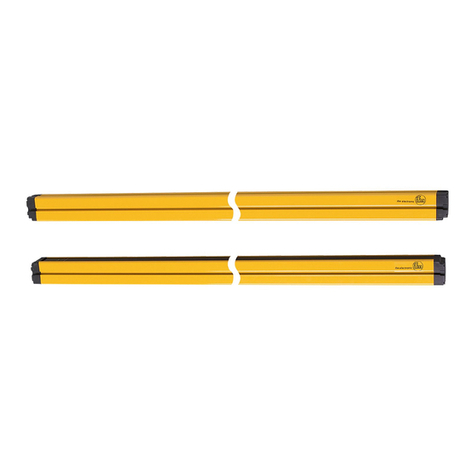
IFM
IFM OY95 S Series Original operating instructions
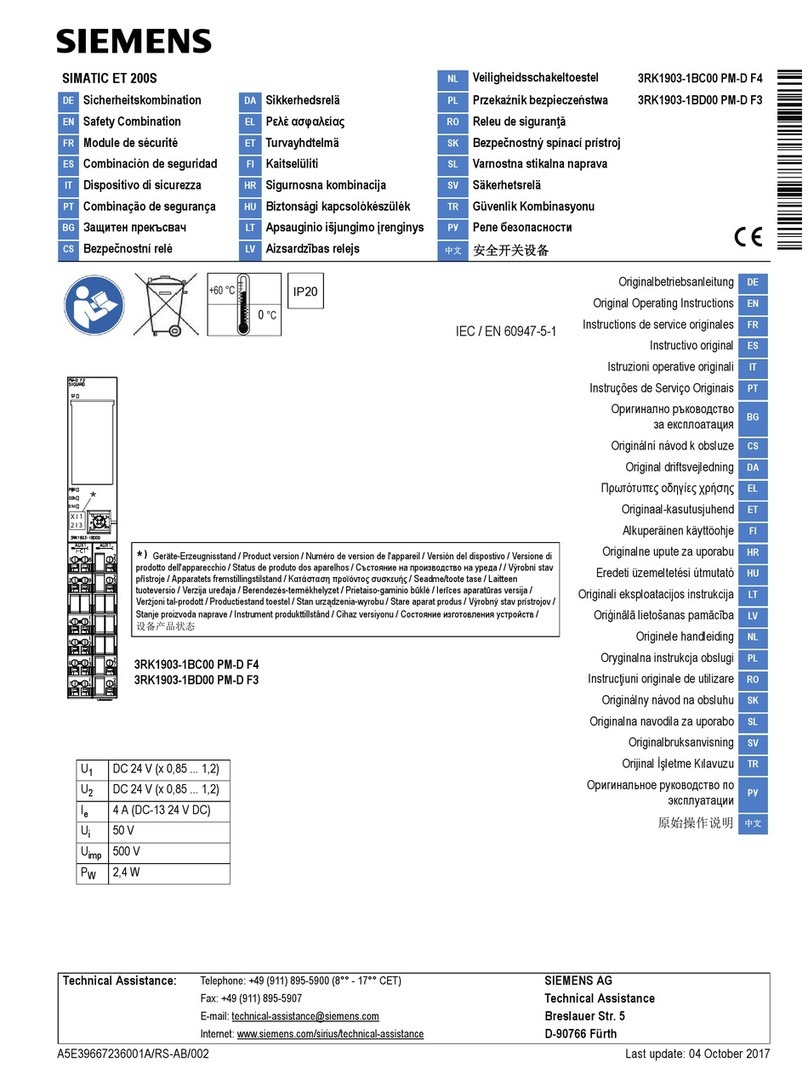
Siemens
Siemens SIMATIC ET 200S Original operating instructions
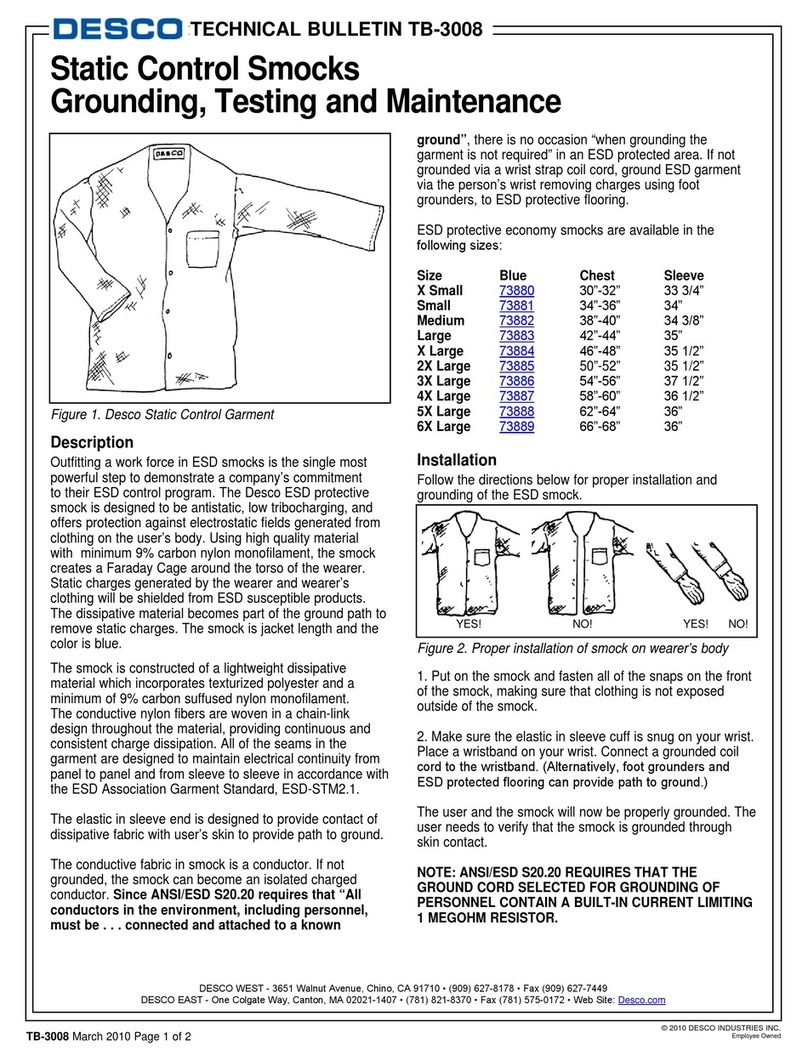
Desco
Desco 73880 TECNICAL BULLETIN
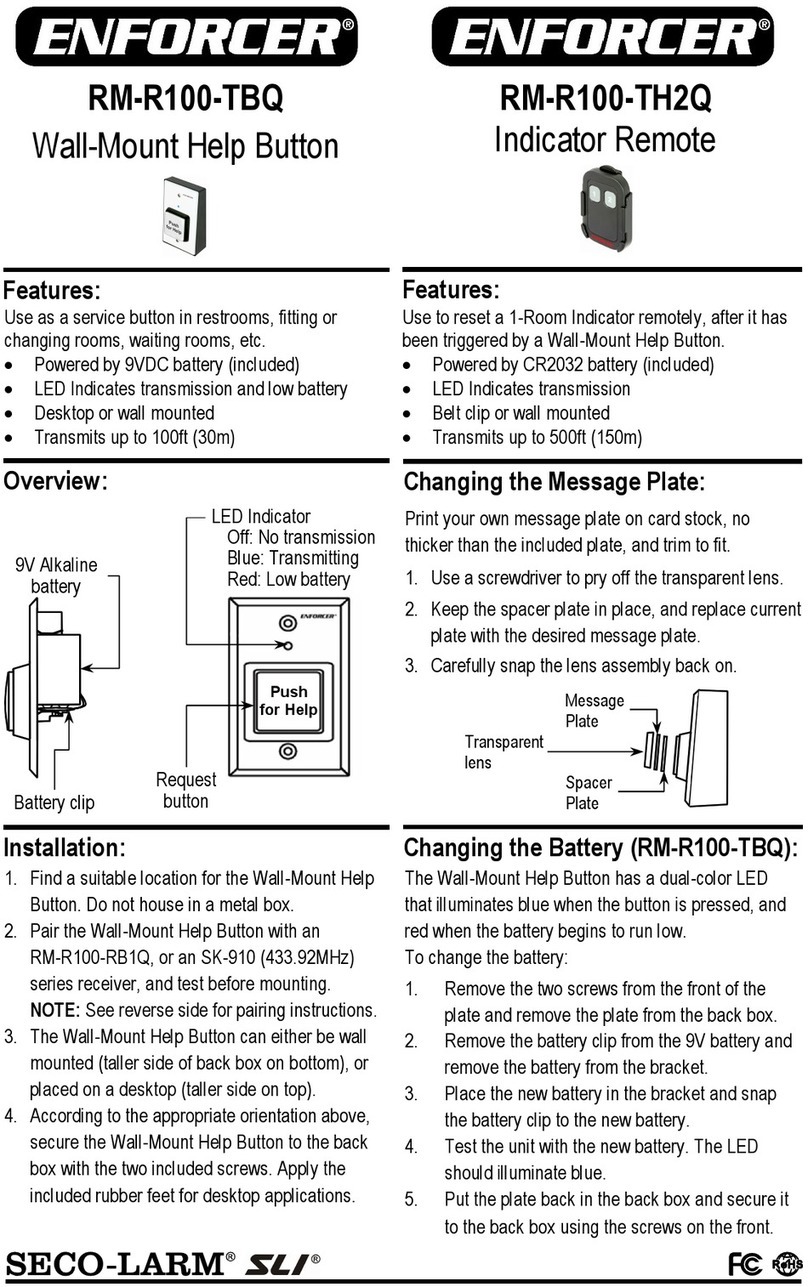
SECO-LARM
SECO-LARM ENFORCER RM-R100-TBQ user manual

Aritech
Aritech RF-EV1012-K4 Installation sheet
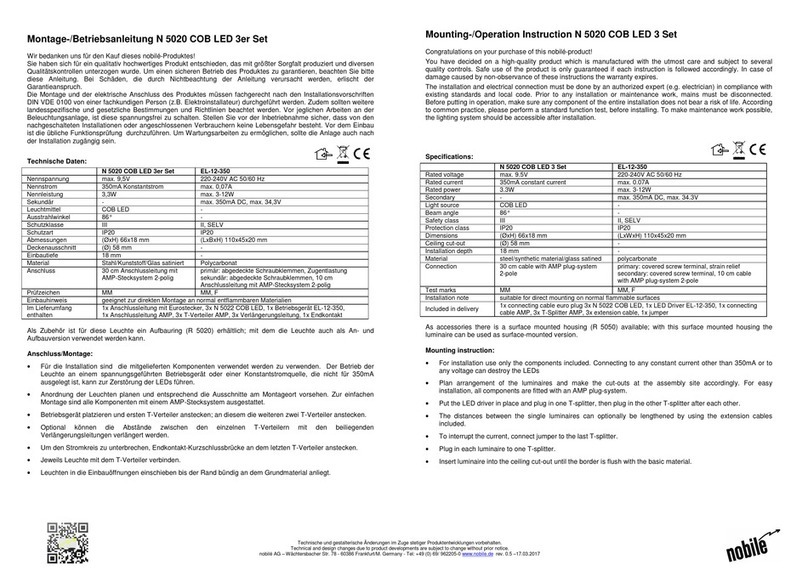
Nobile
Nobile N 5020 COB LED 3 Set Mounting and operation instructions
